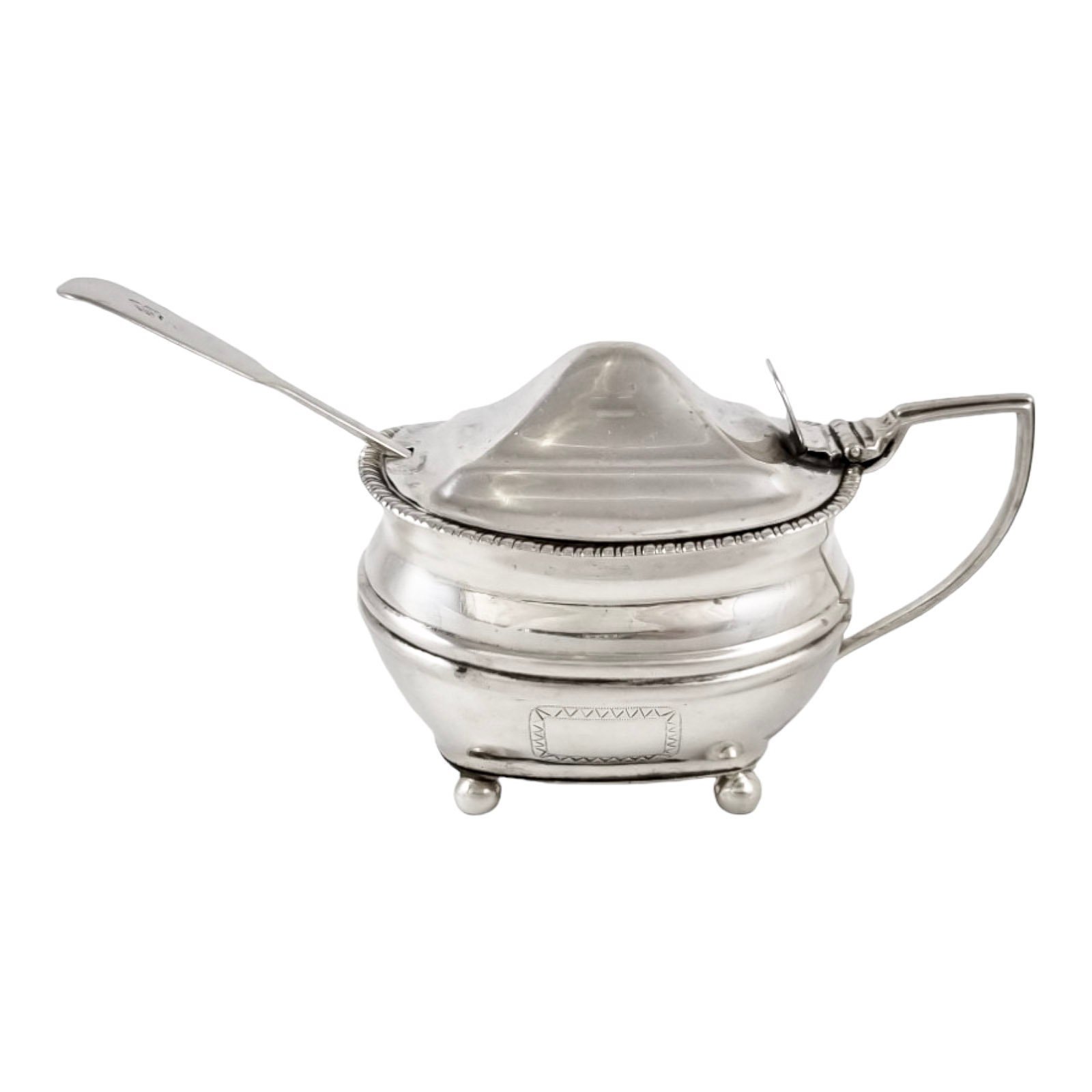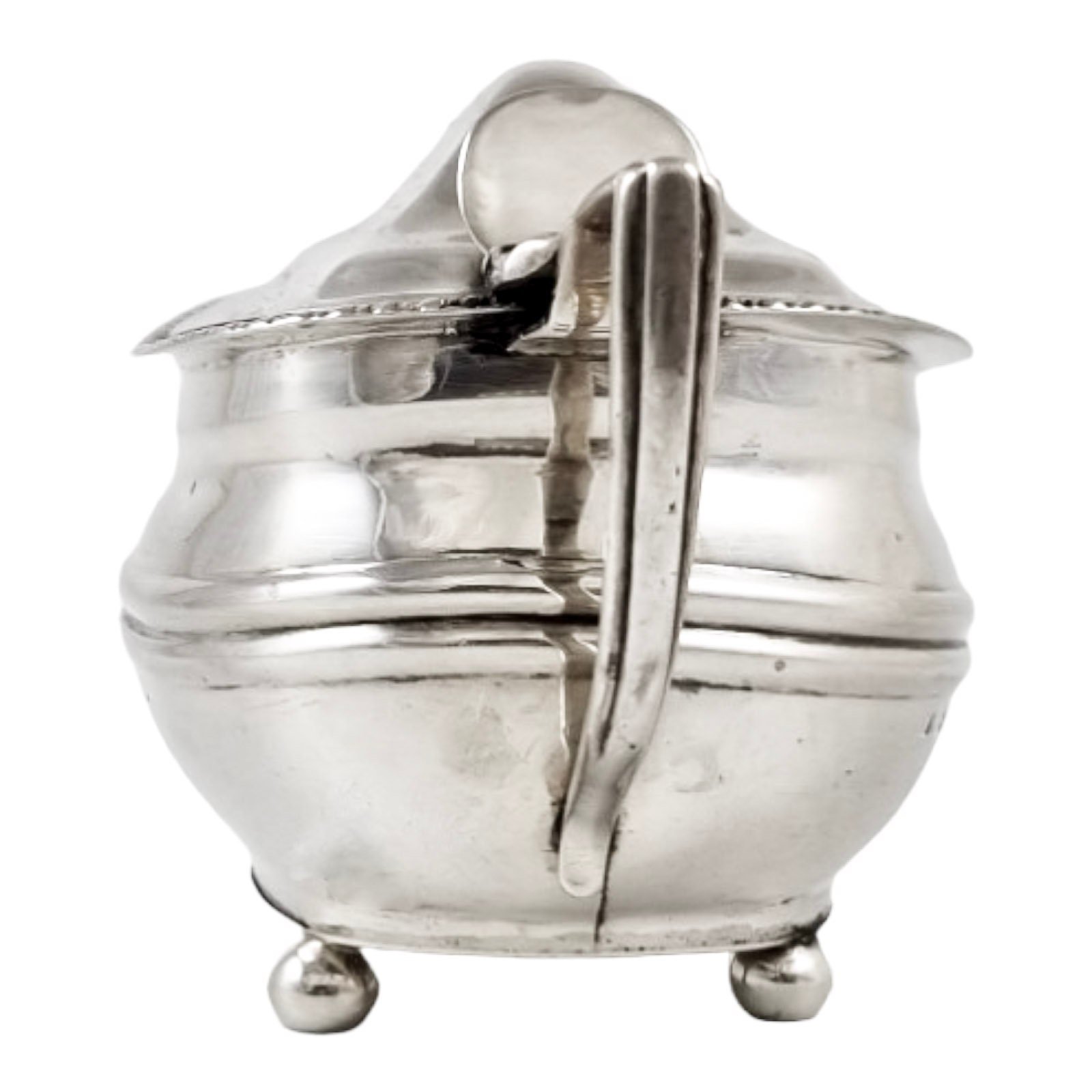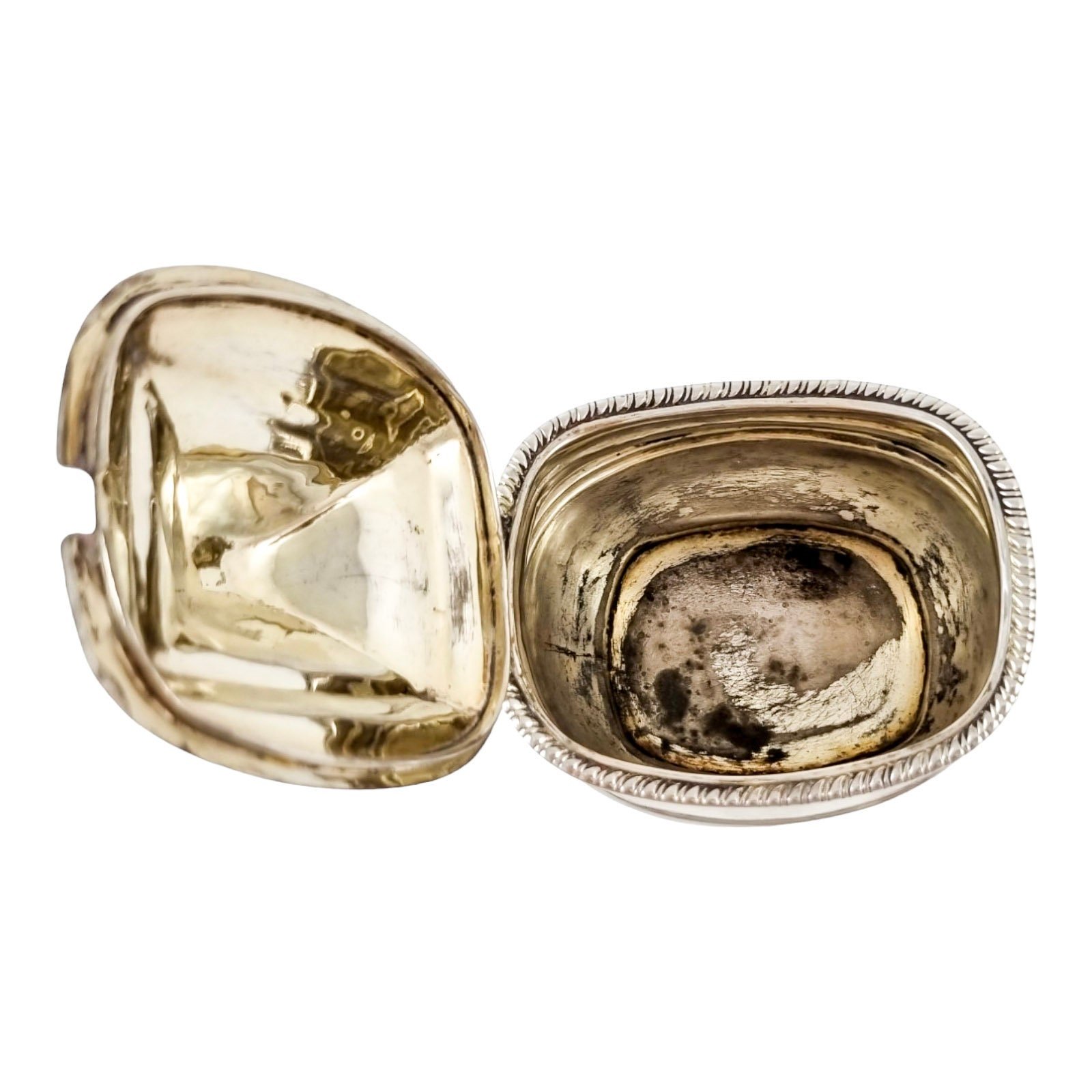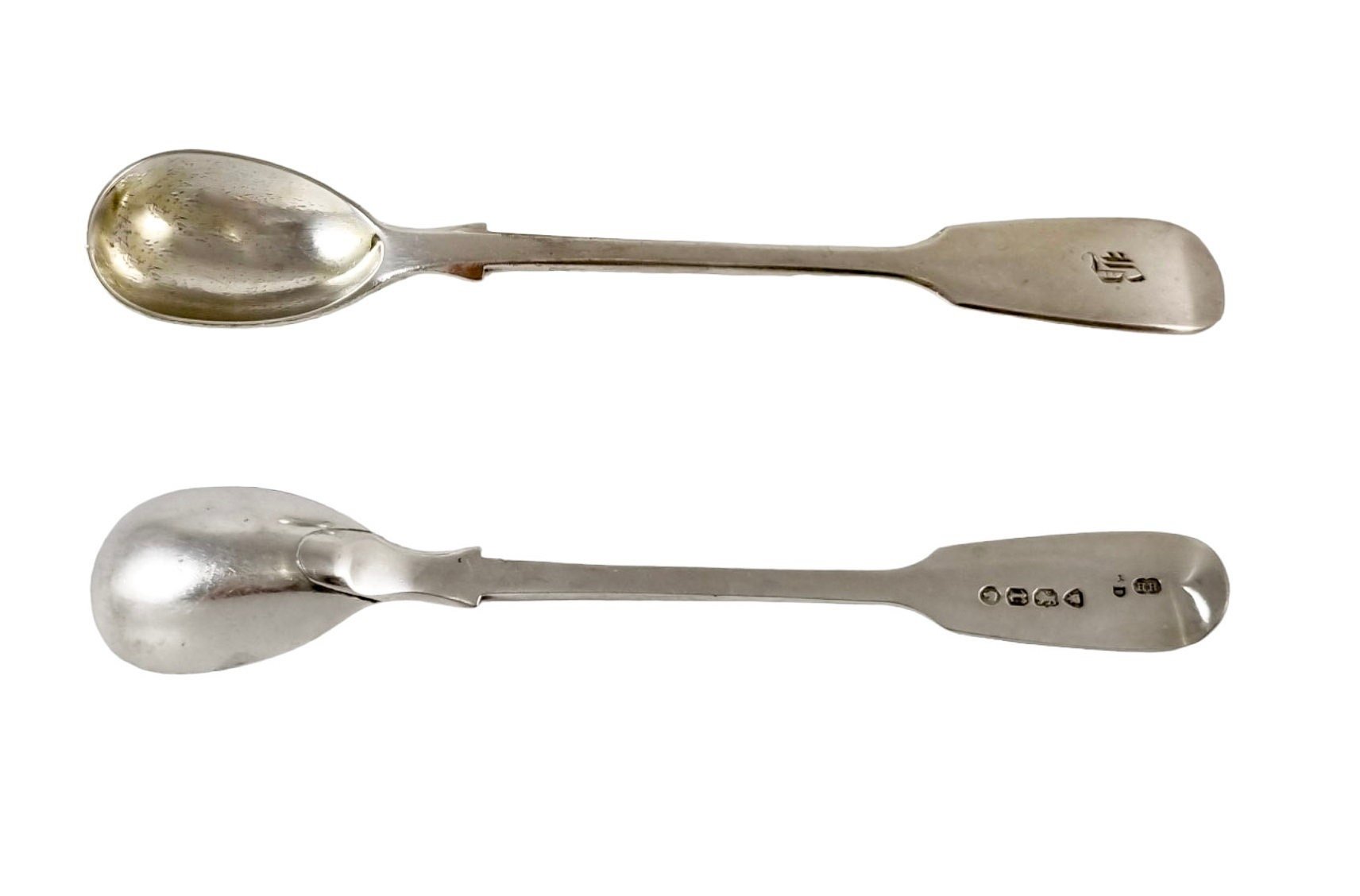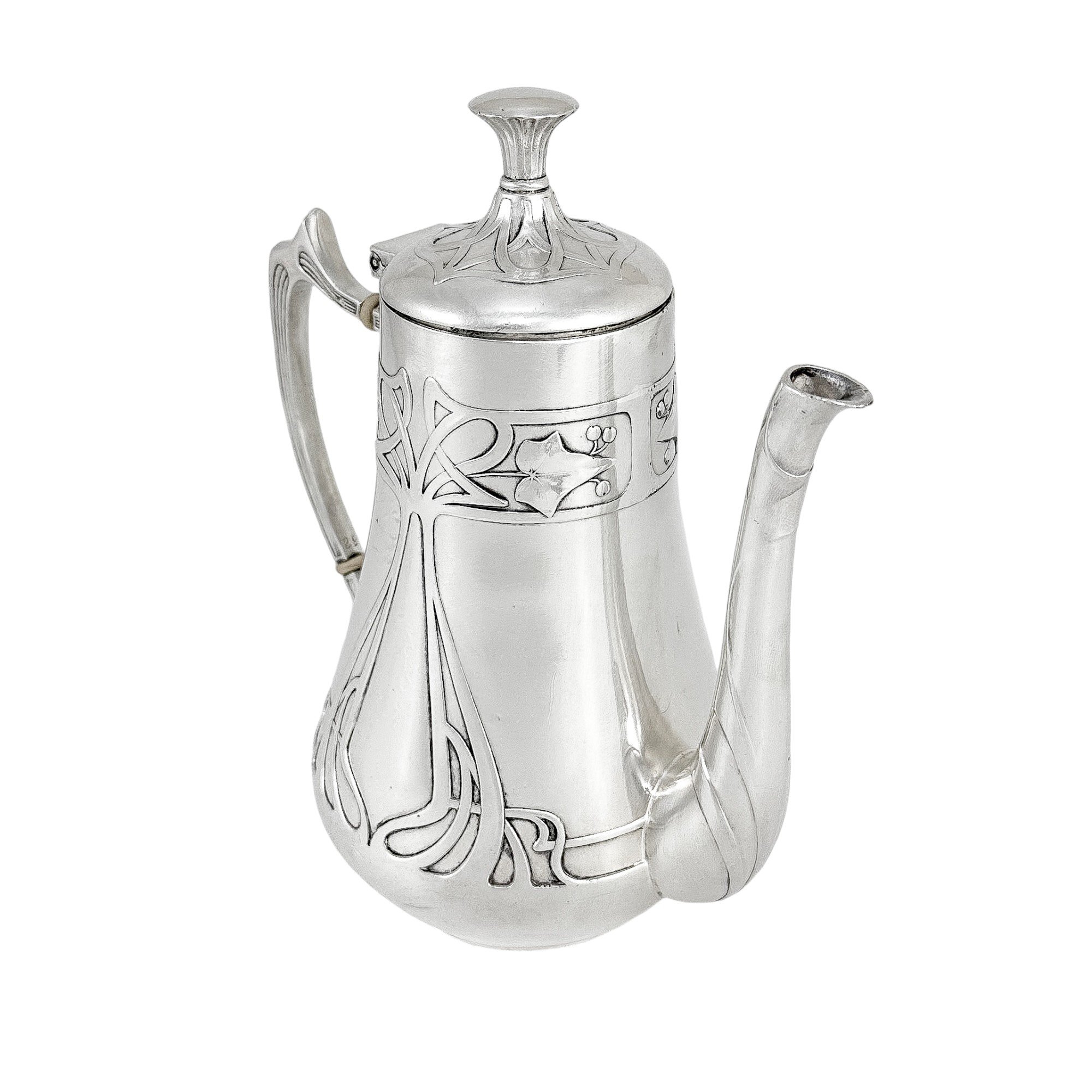George IV sterling silver gilt vinaigrette with floral engraving and vacant cartouche, John Thropp, 1822
George IV sterling silver vinaigrette. Domed body is trimmed with beaded borders on one side and ornately engraved with flowers and leaves on top. The hinged cover opens to reveal a sumptuously gilded interior with a pierced and engraved grille.
The lid has a vacant cartouche for personalised engraving.
Made by John Thropp and fully hallmarked for Birmingham, 1822.
13.57 g
1 x 3 x 2 c
Very good antique condition. The plain side has a shallow indent and small ding; the lid doesn’t sit fully flush; tiny dings to engraved side (not visible under design); the pin securing the grill needs to be replaced.
George IV sterling silver vinaigrette. Domed body is trimmed with beaded borders on one side and ornately engraved with flowers and leaves on top. The hinged cover opens to reveal a sumptuously gilded interior with a pierced and engraved grille.
The lid has a vacant cartouche for personalised engraving.
Made by John Thropp and fully hallmarked for Birmingham, 1822.
13.57 g
1 x 3 x 2 c
Very good antique condition. The plain side has a shallow indent and small ding; the lid doesn’t sit fully flush; tiny dings to engraved side (not visible under design); the pin securing the grill needs to be replaced.
George IV sterling silver vinaigrette. Domed body is trimmed with beaded borders on one side and ornately engraved with flowers and leaves on top. The hinged cover opens to reveal a sumptuously gilded interior with a pierced and engraved grille.
The lid has a vacant cartouche for personalised engraving.
Made by John Thropp and fully hallmarked for Birmingham, 1822.
13.57 g
1 x 3 x 2 c
Very good antique condition. The plain side has a shallow indent and small ding; the lid doesn’t sit fully flush; tiny dings to engraved side (not visible under design); the pin securing the grill needs to be replaced.
Scent boxes, peppermint boxes, loddereins, pomanders and pouncet boxes were all used throughout different periods as small containers for holding various aromatic substances. The earliest examples used oranges, as they were considered a safeguard against infection.
By the time of the Georgian era, powerful aromatic vinegars were developed and a tiny piece of sponge, soaked in the liquid, would be contained beneath the interior grill or perforated cover. The intensity of the aromatics resulted in a drastic reduction in the size of the containers which held them, now called aromatic vinegar boxes. The term "vinaigrette" came into general use during the 1780's.
The vinaigrette was used by both men and women at this time, though by the 1820's it was almost exclusively a feminine accessory. Carried in a pocket or reticule, or suspended from a chatelaine at the waist, it was used to mask unsanitary odours and for direct inhalation of its restorative vapours. Since one never knew when emotion or tight lacing would overcome a lady, the vinaigrette needed to be near at hand and its aromatics quickly accessible. The hinged lid allowed it to be flipped open, like a snuff box, with the flick of a finger.





















